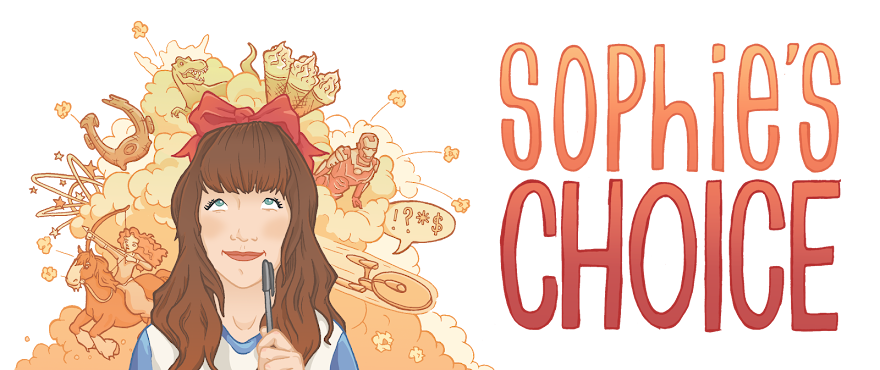The Autumn nights are drawing in, and the stormy weather is blustering me back into the warm arms of the Disney Classics challenge. The good news? This week, there's no sign of pervy Donald Duck. The bad news? We're still about a month away from any Disney movie you will have seen/heard of. For now, we're stuck firmly in Walt Disney's 1940s 'package film' phase, with...
Make Mine Music (1946)
As the title suggests, Make Mine Music is all about pairing animation with famous pieces of music, in a concert-like format. It describes itself as 'A musical fantasy in 10 parts.' "So it's a rip off of Fantasia?" you may say. Well, yes, it does use a similar conceit. However, Make Mine Music has a few key differences that made me enjoy it more than the former (blasphemous, I know):
- It's 75 minutes long, compared to Fantasia's staggering 126-minute runtime
- It has 10 short, snappy segments, where Fantasia has 7 long, draggy segments
- Its creative choices speak far more to a young audience, with a good balance of contemporary and classical music and kid-friendly stories
As I said, there are some kid-friendly stories – but true to '40s Disney form, there's also some troubling darkness. The first segment in the film, 'The Martins and the Coys,' in which a bunch of hillbillies engages in a violent turf war, was banned for the US home entertainment release, due to excessive gun use (we were chill with it here in the UK, apparently).
 |
| I'm getting serious Gaston vibes and NOT loving it. |
For me, though, the violence in this section pales in comparison to the terrifying crowd mentality on display in the later story, 'Casey at the Bat.' An animated version of Ernest Thayer's Victorian poem about a baseball player whose arrogance is his downfall, Disney interprets this particular verse far too literally:
On the lighter front, both of the Benny Goodman sections did a great job of capturing the joyous side of the 1940s. 'All the Cats Join In' follows groups of carefree teens as they drive through the streets, sip on milkshakes, and lindy-hop into the night. 'After You've Gone' has anthropomorphic instruments dancing to an ultra-fast jazz orchestra, and it's as fun as it sounds.
From the benches, black with people, there went up a muffled roar,
Like the beating of the storm-waves on a stern and distant shore.
"Kill him! Kill the umpire!" shouted someone on the stand;
And it's likely they'd have killed him had not Casey raised his hand.You get the picture. I was scared.
On the lighter front, both of the Benny Goodman sections did a great job of capturing the joyous side of the 1940s. 'All the Cats Join In' follows groups of carefree teens as they drive through the streets, sip on milkshakes, and lindy-hop into the night. 'After You've Gone' has anthropomorphic instruments dancing to an ultra-fast jazz orchestra, and it's as fun as it sounds.
 |
| When someone decides to grease the dancefloor |
However, my favourite segment of the whole film was the, quite frankly ADORABLE, 'Johnny Fedora and Alice Bluebonnet.' Set to the delightful tones of The Andrews Sisters – and anyone that knows me can attest that I love a close harmony group – it follows the story of two hats that fall in love in a department store window in Edwardian New York. When the hats get sold to different customers, they are desperate to reunite, to the annoyance of their owners. With the atmosphere of a later movie like The Aristocats and the storytelling of a Pixar short, this section is full to the brim with charm.
 |
| Hats falling love? Check. Hats being able to give birth to baby hats? Check. |
The two other major parts of Make Mine Music are Disney's kid-friendly retelling of 'Peter and the Wolf,' and the sillier but also devastating 'The Whale Who Wanted to Sing at the Met.' Both sections expertly balance comedy with a genuine threat. The wolf in 'Peter' is pure nightmare fodder, if only for his teeth, and the whale's tragic demise in 'the Met' is truly heartbreaking. However, the lasting image from 75 minutes of Make Mine Music does end up being a whale singing an aria in a wig and suit, so the comedy goal is achieved.
While it hits a few bum notes, Make Mine Music was certainly less painful than it could have been. If it's Fantasia for dummies, then I'm definitely a well-entertained dummy.
Villain rating: 4/5 for the wolf's killer eyes
 |
| Sea World used to be far more sophisticated back in the day. |
Villain rating: 4/5 for the wolf's killer eyes
Best Song: All the Cats Join In
Disney Detail: The 'Peter and the Wolf' section is narrated by Sterling Holloway, who voiced Winnie-the-Pooh, the Chesire Cat, Kaa the snake, and Roquefort from The Aristocats. Yup, the cute mouse!
Why it's a Classic: Although disjointed by design, Make Mine Music shows how Disney understands its place in entertainment, blending the joyous side of contemporary culture with the cosiness of nostalgia. This is carried forward throughout their feature films, with the writers unafraid to put modern jokes and references into traditional fairytale stories.
Why it's a Classic: Although disjointed by design, Make Mine Music shows how Disney understands its place in entertainment, blending the joyous side of contemporary culture with the cosiness of nostalgia. This is carried forward throughout their feature films, with the writers unafraid to put modern jokes and references into traditional fairytale stories.





